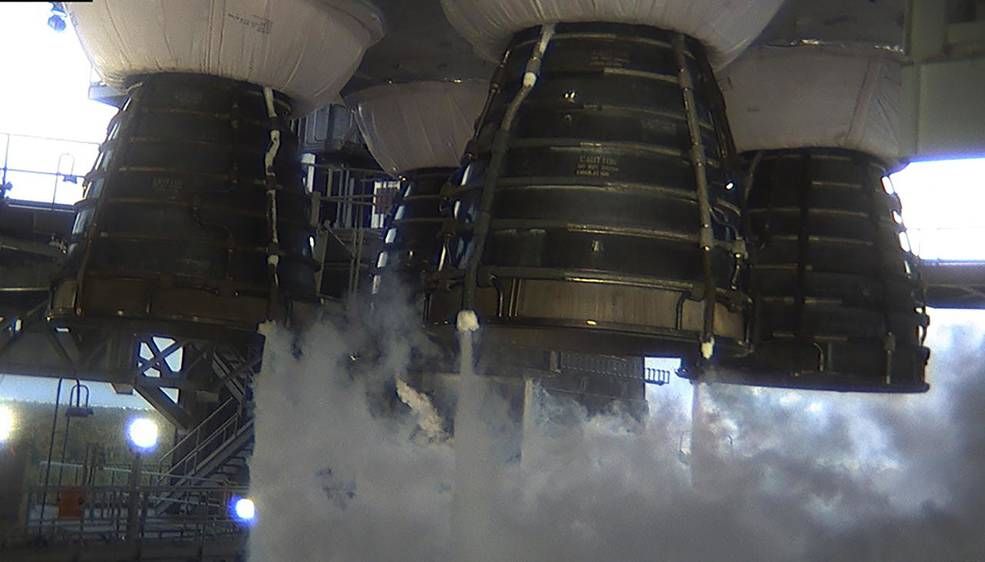NASA to conduct 2nd ‘hot fire’ test with SLS megarocket in February

NASA will conduct a second critical engine test for its first Space Launch System megarocket in February after the first attempt ended earlier than planned this month.
“NASA plans to conduct a second green run hot fire test as early as the fourth week in February with the Space Launch System (SLS) rocket’s core stage that will launch the Artemis 1 mission to the moon,” NASA officials said in a statement Friday (Jan. 29).
Artemis 1 is the first uncrewed test flight of the SLS rocket for NASA’s Artemis program, which aims to return astronauts to the moon by 2024. The mission was slated to launch to the moon later this year. But that schedule hinges on the SLS rocket passing its “green run” tests, a series of trials to prove the booster is ready to fly. On on Jan. 16, when NASA ignited the SLS core stage’s four main RS-25 engines together for the first time, they shut down much earlier than planned.
That test, which was supposed to run for 485 seconds, or just over 8 minutes, stopped just 67 seconds after the engines were lit. Because of this unexpected early ending, NASA and core stage lead contractor Boeing decided to conduct a second hot fire test, NASA officials said.
Video: How NASA’s SLS megarocket engine test works
This second hot fire will provide additional data to help to certify the rocket’s core stage for flight and should pose minimal risk to the core stage, according to the same statement.
Following the first hot fire test, the core stage hardware, including the RS-25 engines and the B-2 test stand remain in “excellent condition,” according to the same statement, “and no major repairs are needed to prepare for a second hot fire test at NASA’s Stennis Space Center in Bay St. Louis, Mississippi.”
Still, to prepare for the test, the team, while continuing to analyze data from the first hot fire, is drying and refurbishing the SLS engines, making minor repairs to the system’s thermal protection system and updating conservative control logic parameters which were responsible for the first test ending early, according to NASA.
A second hot fire test lasting at least four minutes (approximately) would provide enough data to help show that the core stage is flight-ready, according to the statement. This second hot fire would additionally allow the mission team to collect data about how the rocket’s core stage performs over a longer period.
Following this test, the team will take about a month to refurbish the rocket’s core stage and engines before the core stage is brought to NASA’s Kennedy Space Center in Florida, where it will be pieced together with other parts of the SLS megarocket.
In addition to the Artemis 1 SLS rocket tests, NASA has resumed testing individual RS-35 engines for future Artemis flights. On Thursday (Jan. 28), the space agency successfully fired an RS-25 engine for its full eight-minute duration as part of those tests.
Email Chelsea Gohd at cgohd@space.com or follow her on Twitter @chelsea_gohd. Follow us on Twitter @Spacedotcom and on Facebook.
